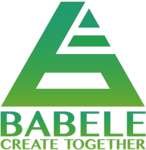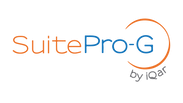Description

BABELE

HYPE Innovation
Comprehensive Overview: BABELE vs HYPE Innovation
HYPE Innovation and BABELE are distinct platforms that focus on supporting innovation management, although they may target slightly different aspects and markets within this sphere.
HYPE Innovation
a) Primary Functions and Target Markets:
-
Primary Functions: HYPE Innovation provides a suite of tools designed to foster innovation within organizations. Its software facilitates idea generation, collaboration, and development processes. Key features include idea management, campaign management, trend scouting, and collaborative innovation.
-
Target Markets: HYPE primarily targets large enterprises looking to systematize and scale their innovation processes. This includes industries like pharmaceuticals, manufacturing, technology, and financial services, where innovation is crucial for competitive advantage.
b) Market Share and User Base:
HYPE Innovation has a significant presence in the enterprise innovation management sector, known for its robust feature set and enterprise-grade capabilities. While specific market share data might fluctuate, HYPE is often ranked among the top providers in the innovation management space, with a substantial user base across Europe and the United States.
c) Key Differentiating Factors:
- Enterprise Focus: HYPE offers a scalable, comprehensive solution that supports the complex needs of large organizations.
- Integration Capabilities: It integrates well with existing enterprise software suites, allowing for seamless adoption across various organizational departments.
- Depth of Features: The platform provides advanced analytics, reporting, and customizable workflows, appealing to organizations with mature innovation strategies.
BABELE
a) Primary Functions and Target Markets:
-
Primary Functions: BABELE is a platform focused on collaborative business modeling and impact strategy support. It combines elements of mentorship, knowledge sharing, and community-driven collaboration to help entrepreneurs and organizations develop sustainable and impactful businesses.
-
Target Markets: BABELE targets startups, social enterprises, NGOs, and educational institutions. It’s designed to support projects that seek social or environmental impact, as well as business viability.
b) Market Share and User Base:
BABELE has a niche market focus, primarily serving communities involved in social innovation and entrepreneurship. Its user base includes diverse groups interested in impact-driven projects, but it operates on a smaller scale than enterprise-focused platforms like HYPE.
c) Key Differentiating Factors:
- Impact Focus: BABELE differentiates itself by targeting organizations and individuals who prioritize social and environmental impact alongside financial performance.
- Community and Collaboration: The platform heavily emphasizes community engagement and collaborative input, making it ideal for sectors that benefit from network-driven innovation.
- Methodology: BABELE provides structured methodologies tailored to sustainable business development, which is a crucial consideration for its target market.
Comparison
- Scale & Scope: HYPE serves larger enterprises with complex needs, while BABELE caters to smaller groups focused on social impact.
- Features: HYPE offers more in-depth features for comprehensive innovation management, whereas BABELE emphasizes collaborative modeling and community insights.
- Market Approach: HYPE leverages traditional enterprise sales channels, whereas BABELE often partners with accelerators, NGOs, and educational institutions.
In conclusion, both platforms serve specific roles within the innovation landscape, with HYPE focusing on enterprise innovation management and BABELE fostering collaborative development for impactful and sustainable business models. Each has carved out niches corresponding to the unique needs of their respective target markets.
Contact Info

Year founded :
2014
Not Available
Not Available
Romania
http://www.linkedin.com/company/babele

Year founded :
2001
+49 8554 384973
Not Available
Germany
http://www.linkedin.com/company/hypeinnovation
Feature Similarity Breakdown: BABELE, HYPE Innovation
To provide a detailed feature similarity breakdown for BABELE and HYPE Innovation, we need to consider what these platforms are designed to do. Both are tools aimed primarily at innovation management and idea development, although they may have nuances in their specific functionalities and target audiences.
a) Core Features in Common
-
Idea Management: Both platforms likely include features that allow users to submit, evaluate, and track ideas through various stages of development.
-
Collaboration Tools: These platforms probably offer tools that facilitate collaboration among users, such as discussion forums, messaging systems, and team workspaces.
-
Workflow & Process Management: They are expected to have features that help in managing innovation workflows, including the setting of stages or gates for idea approval and development.
-
Reporting & Analytics: Both BABELE and HYPE Innovation are likely to include analytics features that allow users to track the progress and impact of ideas, as well as generate reports.
-
Customizable Templates and Processes: These platforms may offer the ability to customize templates and processes to align with an organization's specific needs and workflows.
b) User Interface Comparison
-
Design and Usability: While the core functionality may be similar, the user interface design can vary greatly. Typically, these platforms strive for user-friendly designs that cater to a wide range of users, from those who are tech-savvy to those who may be less experienced with technology.
-
Dashboard Layouts: Both platforms would likely provide dashboards that give quick insights into key metrics and project statuses, though the layout and level of customization can differ.
-
Accessibility and Navigation: The ease of navigation and overall accessibility features, such as compatibility with various devices and screen readers, are essential in comparing these interfaces.
c) Unique Features
-
BABELE:
- Social Business Planning: BABELE is known for its focus on social business planning and sustainability, which may include unique tools for developing and managing social enterprise projects.
- Community Engagement: It might have features that focus specifically on engaging community stakeholders in the innovation process, something less emphasized in purely corporate tools.
-
HYPE Innovation:
- Advanced AI and Machine Learning: HYPE may offer more advanced AI-driven features that help in predicting trends, automating workflows, or enhancing idea evaluation processes.
- Integration Capabilities: HYPE might provide more robust integrations with other enterprise software, facilitating smoother workflows across various business systems.
In sum, while both platforms share common features essential for innovation management, their unique strengths and user interface designs reflect their different focal points and target audiences. Evaluating the specific needs of your organization can help determine which platform might be the best fit.
Features

Not Available

Not Available
Best Fit Use Cases: BABELE, HYPE Innovation
BABELE and HYPE Innovation are platforms that facilitate collaborative innovation, but they are tailored to different types of businesses, projects, and scenarios. Here’s a detailed explanation of their best-fit use cases:
a) BABELE
Types of Businesses or Projects:
-
Startups and Small to Medium-sized Enterprises (SMEs): BABELE excels in environments where resource constraints require agile and collaborative approaches. It is particularly well-suited for startups and SMEs that need to leverage collective brainpower to develop innovative solutions without extensive R&D budgets.
-
Social Enterprises and Non-profits: BABELE’s emphasis on collaborative innovation and community engagement makes it a great tool for organizations focused on social impact and sustainability. It helps these organizations to co-create and develop initiatives that address social and environmental issues.
-
Projects Requiring Stakeholder Engagement: BABELE is ideal for projects where stakeholder involvement is crucial. It enables the inclusion of diverse perspectives, which is often necessary in public sector projects or community-driven initiatives.
Best Scenarios:
-
Co-creation and Ideation Processes: BABELE’s platform supports extensive collaboration and idea-sharing across diverse groups. This is beneficial when a project requires input from varied stakeholders to co-create innovative solutions.
-
Strategic Planning and Business Model Innovation: Projects that necessitate strategic foresight and the re-design of business models benefit from BABELE. The platform can facilitate brainstorming sessions that lead to the development of new strategies and models.
b) HYPE Innovation
Types of Businesses or Projects:
-
Large Corporations and Enterprises: HYPE Innovation is typically geared towards larger organizations that have more complex innovation needs. Its enterprise-level functionalities are designed to manage large volumes of ideas and facilitate innovation at scale.
-
Industries with High R&D Intensity: HYPE is suitable for industries such as pharmaceuticals, technology, and manufacturing, where there is a constant demand for innovative products and processes. Its robust features support comprehensive innovation management cycles.
-
Projects Involving Extensive Cross-departmental Collaboration: HYPE Innovation is beneficial for fostering collaboration across multiple departments and even global teams, making it ideal for large-scale innovation projects within multinational corporations.
Best Scenarios:
-
End-to-end Innovation Management: HYPE Innovation is well-suited for scenarios requiring a structured approach to innovation, from ideation through to project implementation. Its tools support everything from idea capture to project execution and analytics.
-
Integrating Innovation with Business Processes: For companies looking to deeply integrate their innovation processes with existing business operations, HYPE provides an ecosystem that aligns innovation with strategic business goals.
d) Industry Verticals and Company Sizes
-
BABELE:
- Industry Verticals: Social enterprises, education, sustainable development, public sector, and community-focused organizations.
- Company Sizes: Primarily small to medium-sized businesses due to its focus on flexibility, cost-effectiveness, and ease of use.
-
HYPE Innovation:
- Industry Verticals: Pharmaceuticals, high-tech, manufacturing, consumer goods, and any sector requiring intensive R&D and large-scale innovation.
- Company Sizes: Best suited for medium to large enterprises that need advanced functionalities for managing a high volume of ideas and projects across global teams.
Each platform caters to different industry needs and organizational sizes, leveraging their strengths to help companies and projects optimize their innovation processes.
Pricing

Pricing Not Available

Pricing Not Available
Metrics History
Metrics History
Comparing teamSize across companies
Conclusion & Final Verdict: BABELE vs HYPE Innovation
To provide a comprehensive conclusion and final verdict for BABELE and HYPE Innovation, we'll consider the value each product offers, weigh their pros and cons, and offer specific recommendations for potential users.
a) Best Overall Value
Value Evaluation:
Determining the best overall value between BABELE and HYPE Innovation depends on the specific needs and context of use for the potential user. If the priority is on a collaborative social innovation platform with community focus, BABELE might provide better value. In contrast, if an organization seeks a robust innovation management tool that handles a wide range of innovation processes and integrates seamlessly into existing workflows, HYPE Innovation might be more suitable.
b) Pros and Cons
BABELE:
-
Pros:
- Strong emphasis on social innovation and collaboration.
- User-friendly interface that fosters community building.
- Ideal for startups and SMEs looking to engage various stakeholders in the innovation process.
-
Cons:
- Might lack comprehensive features required by large enterprises.
- Limited integration options with other enterprise tools.
HYPE Innovation:
-
Pros:
- Comprehensive suite of innovation management tools.
- Scalable solutions suitable for large enterprises.
- Strong focus on structured idea management and integration with existing business processes.
-
Cons:
- Can be complex and overwhelming for small organizations or startups.
- Higher cost could be prohibitive for smaller budgets.
c) Recommendations
For Startups and Small to Medium Enterprises (SMEs):
- Recommendation: Consider BABELE if your focus is on grass-roots innovation and community engagement. Its tools are well-suited for fostering creativity and collaboration without the complexity that larger organizations might require.
For Large Enterprises:
- Recommendation: HYPE Innovation offers the scalability and integration capabilities needed for handling more complex and structured innovation processes. Its suite of tools is designed to manage large-scale ideation across multiple departments.
Decision-Making Tips:
- Assess the specific goals and needs of your organization. Evaluate factors like budget, scalability requirements, and the importance of community involvement.
- Consider potential future needs and growth to select a platform that not only fits your current requirements but can also scale with your organization.
Final Verdict: Ultimately, the choice between BABELE and HYPE Innovation should be guided by the unique needs of the user. Startups and SMEs are likely to find more immediate and tailored value in BABELE’s community-focused environment, while large organizations with complex innovation processes might derive the best value from HYPE Innovation’s extensive and integrative features.
Add to compare
Add similar companies




